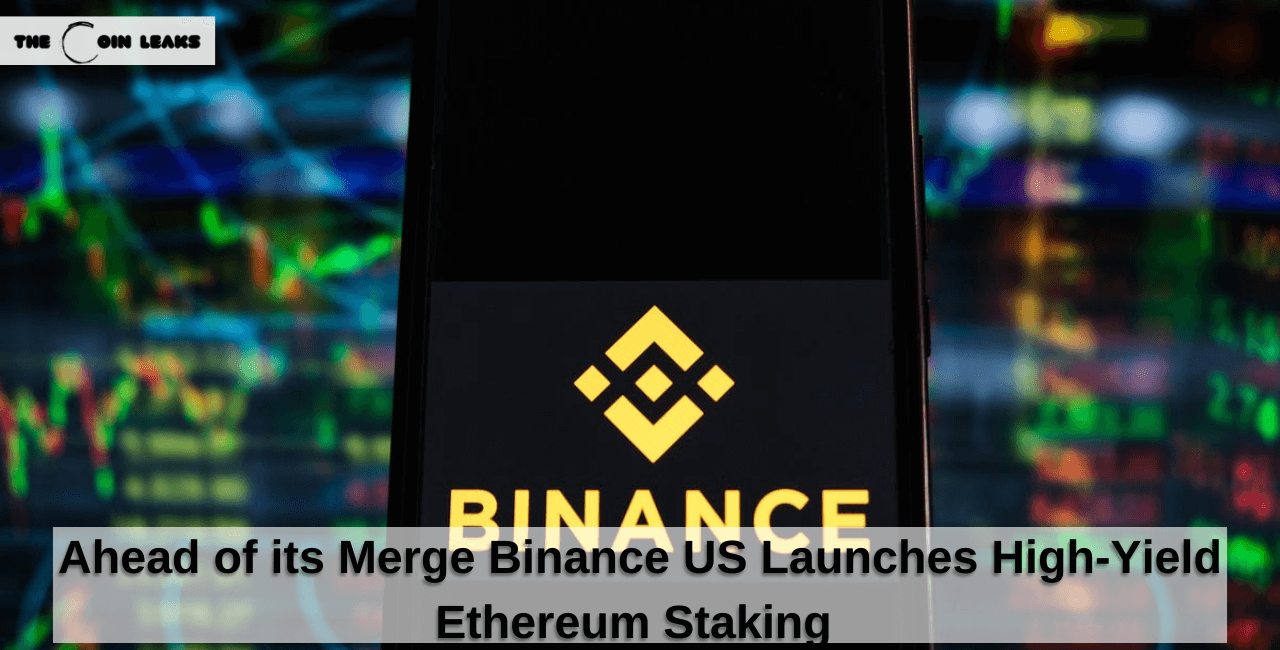Binance US is the latest major cryptocurrency exchange to go live with Ethereum stakes within its system.
The company made an announcement on Wednesday that its users are now able to stake the second largest cryptocurrency in terms of market capitalization and get rewards at a rate of 6% in APY.
It’s an impressive leap over other major competitors like Lido and Coinbase that currently offer 3.5 percent and 3.25 percent APY, respectively on ETH staked. Platforms for lending crypto like BlockFi and Nexo provide only 4 percent and 5% APR on ETH stakes, in contrast, they operate on an extremely high-risk, profitable business model with high returns.
The stake rewards can change depending on Ethereum transaction fees, among other things, as per Binance US.
“As the Ethereum network continues to transition towards The Merge, we are thrilled to now offer ETH staking with some of the highest APY rewards in the industry,” Binance US CEO Brian Shroder announced in the press release.
“merge” or “merge” refers to Ethereum’s long-awaited upgrade, which will join the consensus layer of the network called”the beacon chain,” and its execution layer that is currently the Ethereum mainnet. This merger will conclude Ethereum’s transformation from a consensus mechanism that relies on proof-of-work to a proof-of-stake system.
The merger is anticipated to occur between September 13 and. Following that, Ethereum users will be allowed to put their ETH into stakes to protect the network and earn an ETH reward as a result.
Based on the beacon chain’s latest data and it appears that the Amber Group, a crypto financial services company has calculated that the rewards for validators can range between 8 and 12 percent in APY. However, there’s a caveat.
To be a single staker, you have to pledge at least 32 Eth to join the platform. It’s around $50,000 at the current price that is the price for normal users.
In this way, players are increasingly turning to centralized staking services, also known as staking pools instead. Even though these platforms charge costs that reduce stakers’ income but they drastically reduce the cost of access. For instance, Binance US is an example. It just requires 0.001 Ethereum to begin that’s about $1.50 worth of Ethereum at current prices.
However, it has raised questions about the possibility of centralization of the Ethereum network and how this could influence its ability to be in a position to withstand censorship, in the event that U.S. regulators have increasingly set their targets on cryptocurrency.
As of now, only four stake providers–Lido Kraken, Coinbase, and Binance–control almost two-thirds staked ETH. This means that just a few large corporations currently play an important role in confirming transactions through the network. This has led to concerns that certain transactions may be blocked on a protocol-level due to that the Treasury Department imposed sanctions on Tornado Cash last month.
Coinbase President Brian Armstrong tweeted in mid-August that he’d rather close his company’s staking business rather than censor transactions. It’s unclear how other centralized businesses will react in the event of a threat from regulators.

